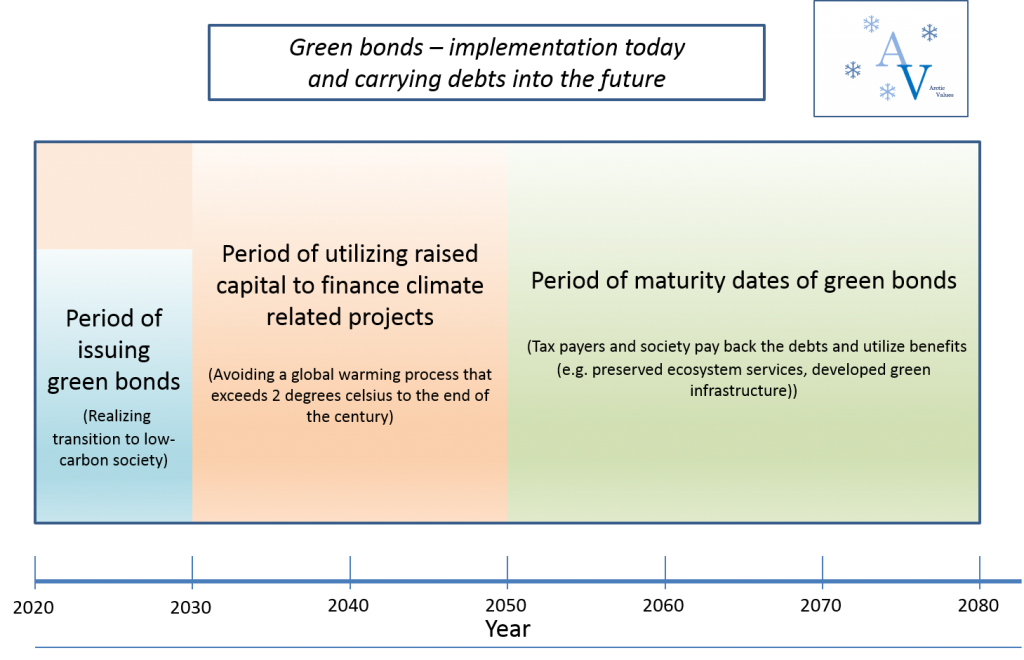by Adrian Braun
October 2019
It is worth to discuss if future generations better pay for today´s mitigation solutions than for climate change caused damage repairs in the future when it is in fact too late. It will not become cheaper and easier to implement plans the longer we wait!
Could the future generations finance our today´s efforts to mitigate climate change? Yes they could, there are financial instruments available that make this possible. Is it unfair to dump that burden to the future generations? Yes, of course it is, but then there is at least the possible chance that these generations still find a world that is worth to live in.
Today, the global society is not lacking solutions to tackle climate change impacts! Many of those ideas focus on decreasing greenhouse gas emissions and more efficient consumption of natural resources. Transitions towards renewable energies and moving from a linear economy to a circular economy are in the forefront of concepts to meet national and international climate targets in order to prevent the myriad of natural disasters that go along with undesired climate scenarios.
The question is how to finance all these ideas, approaches and plans that allow companies, municipalities, cities, nations and consequently the entire globe to stay inside the borders of the determined climate targets and achieving eventually a low-carbon economy? The capital available never seems to be enough! However, there seems to be large consensus that preventing negative climate change impacts today is much cheaper than paying for the impacts once they have occurred.

Green bonds (aka climate bonds) are financial instruments to raise capital to finance projects that follow a purpose to decrease climate change impacts. Green housing, energy-efficient production and stepping away from fossil fuel consumption are notable initiatives in this respect. The idea is that project developers issue a green bond for a specific purpose, for example a solar power plant that serves a community. This is going work similar to a loan and the community as issuer will be the debtor and the bondholders, who are buying (investing into) the bonds become the creditor. Bond buyers can sign the bonds until the required capital is raised and will receive a normally annual interest rate (coupon). Every bond has a pre-determined life-span (maturity) and with the due date the issuer has to pay back the invested capital to each bondholder. Meanwhile, bondholders can trade bonds on the stock exchanges and they might rise or decrease in value. Another attractive element for the issuers is that despite the external investment, power and control remains with the party that utilizes the capital. Hence, once the maturity date finally comes, perhaps in 30-40 years from now, the issuer (in our example the community with the bio-energy plant) will pay back what they owe to the bondholders and using taxpayers money from the community budgets. By scaling up this concept to communities and cities all over the globe, this idea could be a significant contribution to achieve a low-carbon society (q.v. Sachs J. D. 2014). However, certainly a diverse portfolio of political and socio-economic initiatives is required to avoid the worst impacts of a changing climate in the upcoming decades, and green bonds could be only one crucial element in this puzzle.
Reference: Sachs, J.D. (2014). Climate Change and Intergenerational Well-Being. in The Oxford Handbook of the Macroeconomics of Global Warming.
Legal Notice / Impressum – Arctic Values – Copyright © 2023